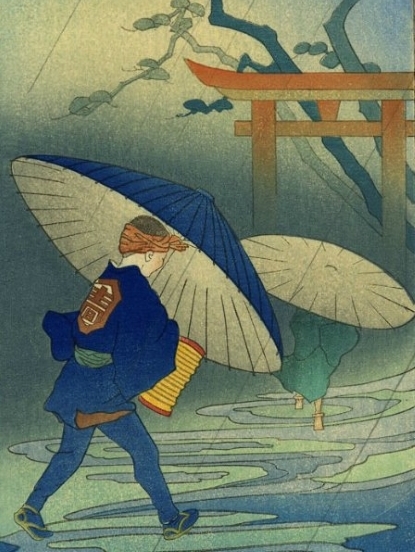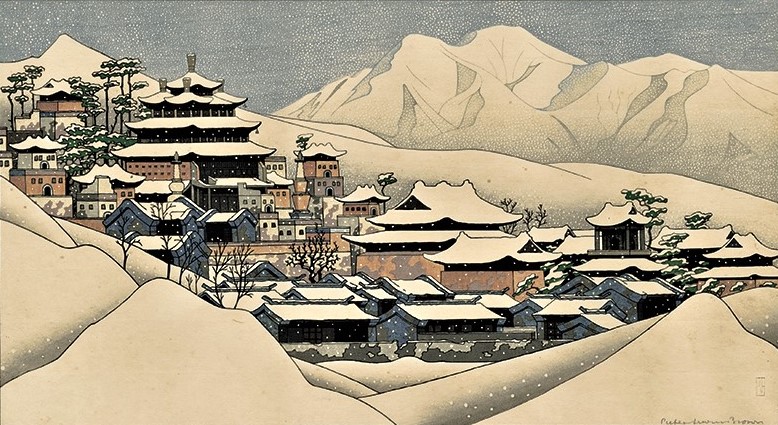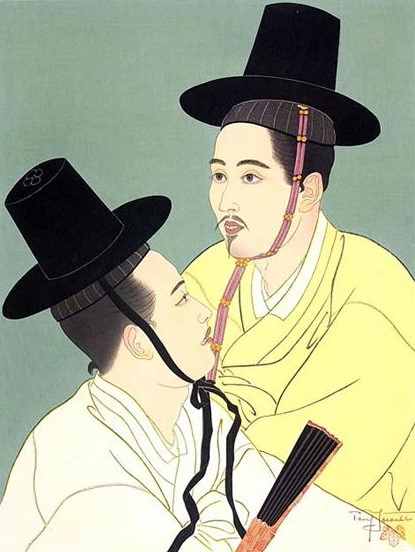THE PRECURSORS
The Far East took its time to enter the field of vision of Western painters. It was the exquisiteness of silks and the porcelains from China and Japan that Italian merchants brought back from their long journeys through Central Asia that first impressed the Western eye, as evidenced by the small bowl of The Adoration of the Magi by Andrea Mantegna (1495) as well as the permanence of the development of maritime traffic in the 17th and 18th centuries. The first true pictorial encounters were offered by the few Jesuits who resided during this period in Beijing, specifically Giuseppe Castiglione (1688-1766).
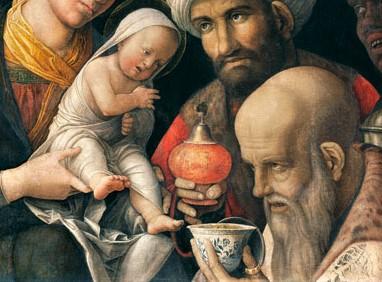
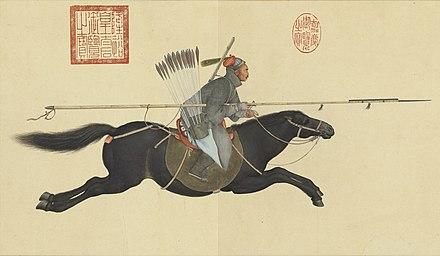
At the same time, commercial exchanges in the 18th century led to an extraordinary blossom of Chinese fashion throughout Europe. Painting, tapestry and engraving provide the best examples. François Boucher triumphed with his Chinese Suite that Louis XV offered to Emperor Qianlong. And it was France that the latter asked to make the 16 copper engravings of his conquests in Central Asia, the sketching of which were made by the Jesuits of Beijing.
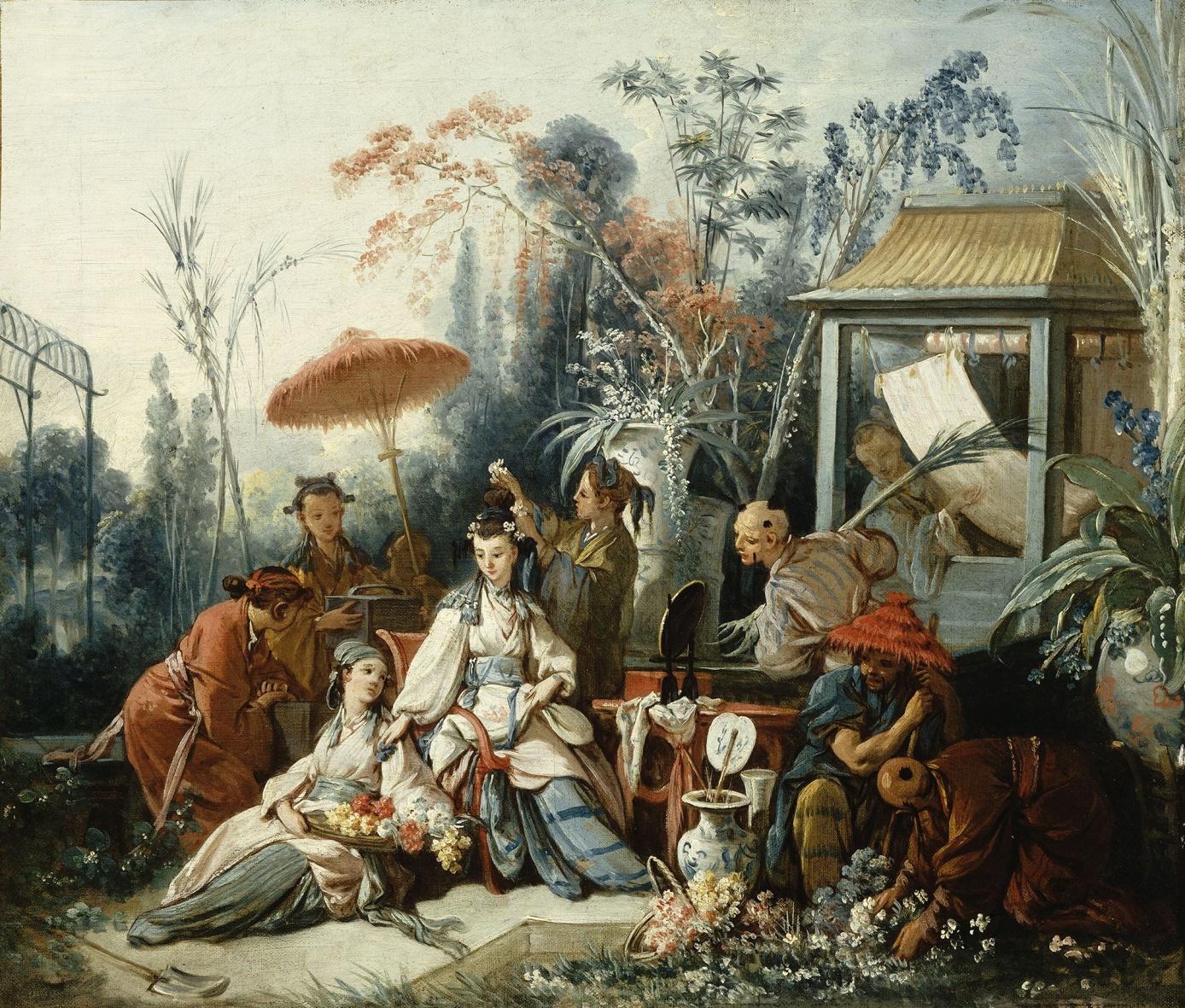
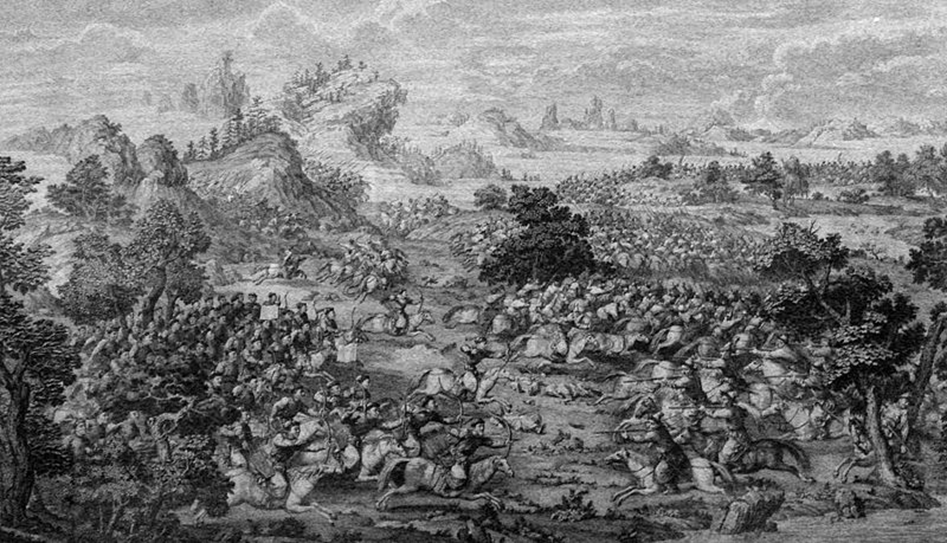
Interest in the Far East declined during the first half of the 19th century but was maintained by two artists who chose to be present there. One of these men was the Englishman George Chinnery whom resided in Macao and then in Hong Kong from 1825 to 1852, alternating sumptuous portraits of wealthy Chinese and Westerners with more humble drawings of the day-to-day life of the people in the streets.
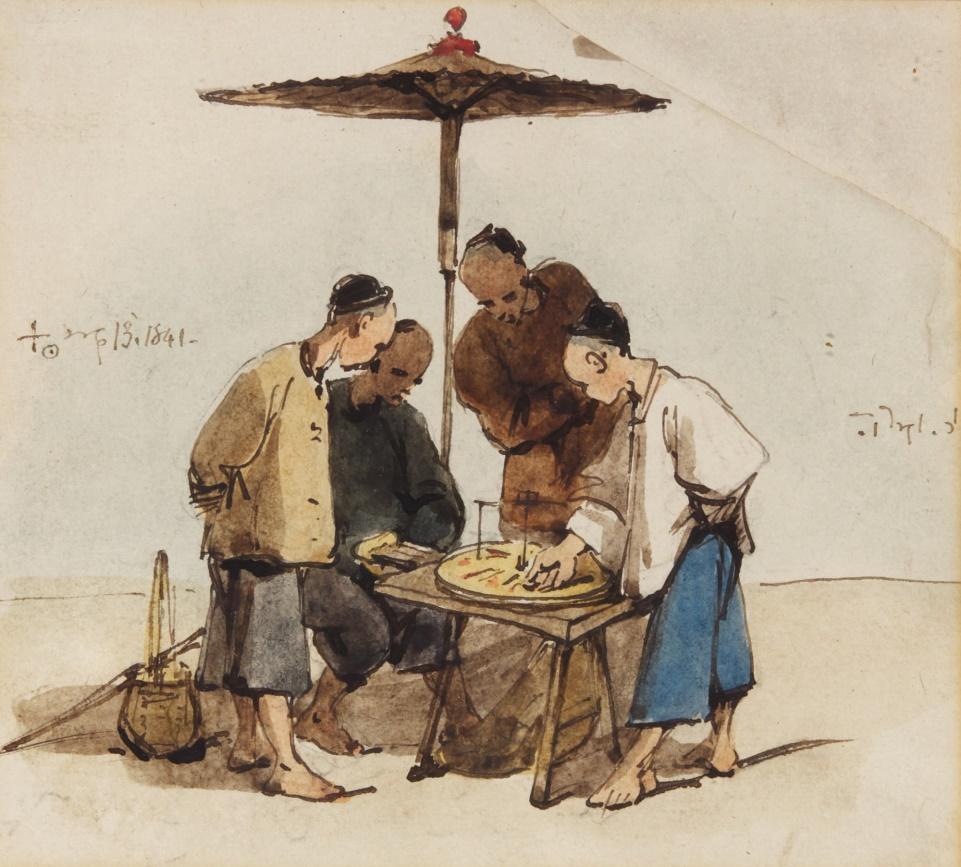
His influence was essential on some Chinese painters who broke from their own traditions to adopt the norms of Western painting. For example, Guan Qiao Chang (1801-1860), better known by his artist name Lam Qua, stoos out in the portraits of powerful Canton merchants.
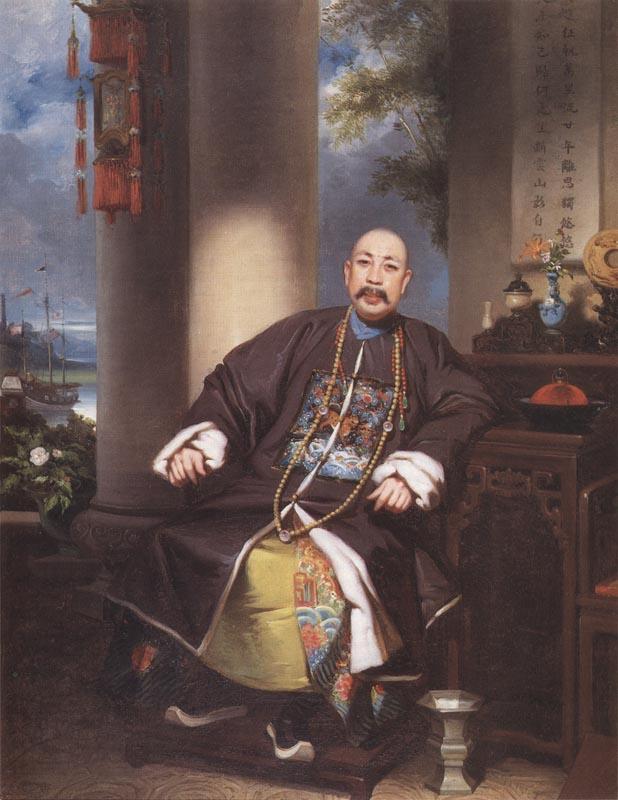
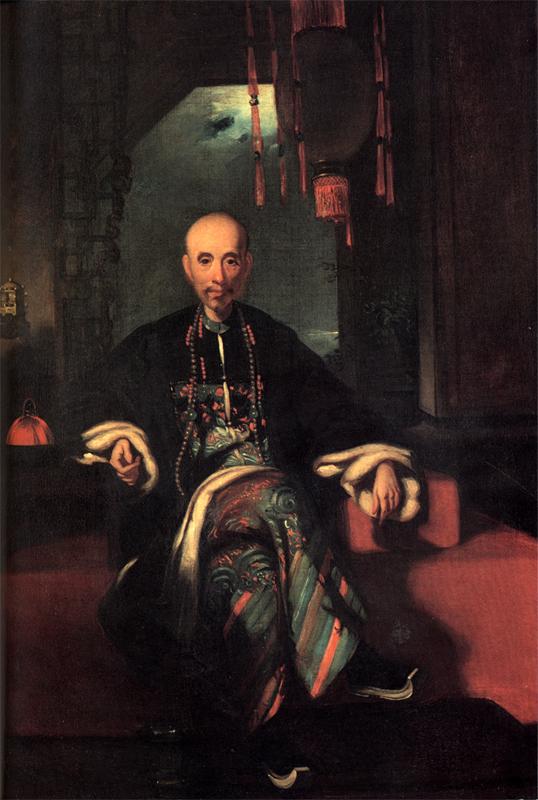
Another artist who remained in the Far East as the Frenchman Auguste Borget, who inaugurated the line of traveling painters by traveling around the world from 1836 to 1840, bringing back hundreds of watercolours and drawings. During his stay in Asia (including India, Philippines, China), he endeavored to reproduce scenes of daily life, presenting for the first time a form of “reportage” on the populations encountered and the places crossed.
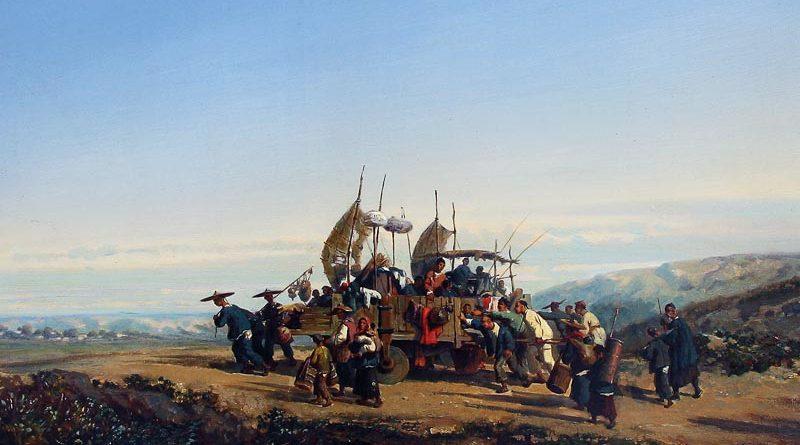
From the middle of the century, relations between the West and the Far East became unbalanced and conflictual, including the Opium Wars (1839-1860) and the forced opening of Japan by the Americans (1853-1854). Both of these were often accompanied by a colonialist view that many cartoonists or caricaturists adopted in the wake of Western penetration. However, curiosity prevailed among artists who were astonished to discover millennial civilizations. Japanism will play a considerable role in this attraction.
Bibliography :
- Michèle Pirazzoli-T’Serstevens, Giuseppe Catiglione, peintre et architecte à la cour de Chine, Thalia Edition, Paris 2007
- Michel Beurdeley, Peintres jésuites en Chine au XVIIIe siècle, Anthèse édition, Arcueil 1997
- Musée des beaux-Arts et d’archéologie de Besançon, Une des provinces du rococo, la Chine rêvée de François Boucher, In Fine éditions d’art, Paris 2020
- Hong Kong Museum of history, Impressions of the East, the art of George Chinnery, Hong Kong, 2005
- Musée de l’hospice Saint Roch d’Issoudun, Auguste Borget, peintre voyageur autour du monde, Issoudun 1999
- Robin Hutcheon, Souvenirs of Auguste Borget, South China Morning post, Hong Kong 1979
